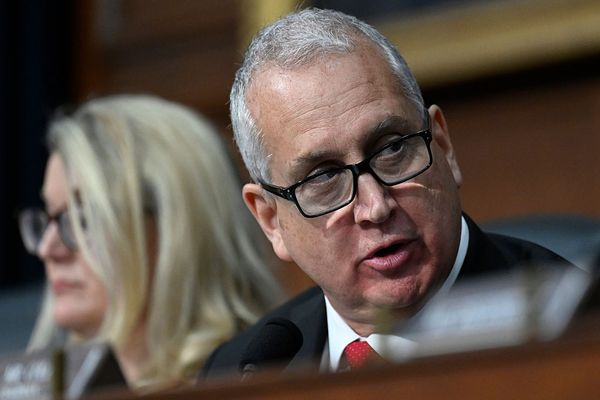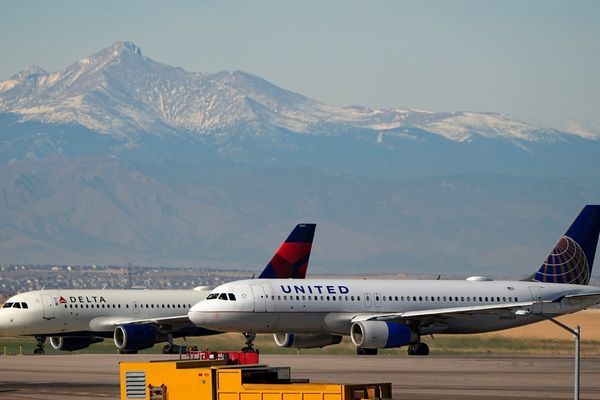
Until recently, Ron M would take illicit drugs in what space he could find: public restrooms, subway alleyways or just in the street. He often used alone; the possibility of a fatal overdose was high.
That’s why the East Harlem overdose prevention center has been such a blessing to him.
“It’s saved many lives since it’s been here,” said Ron, 31. “It keeps us from having to get high in bad places.”
Ron, whose last name has been withheld for privacy, has used heroin for years, but the New York opening of the nation’s first two sanctioned overdose prevention centers (OPCs) on 30 November has significantly increased his chances of survival.
The center provides those who use substances with a safe and clean space to do so, and with help available in case of an overdose, which has already helped avert many deaths.
“This place is a blessing – and if there were more, it would save so many lives,” Ron said.
The stress, anxiety and isolation of the Covid-19 pandemic, combined with widespread contamination in the illicit drug market from the synthetic opioid fentanyl, has worsened America’s overdose epidemic. More than 100,000 Americans died of an accidental overdose in the year ending April 2021, a sharp increase compared with the previous year. The largest increase was among Black men.

For many people struggling with problematic substance use, traditional methods of abstinence-based help – such as month-long rehab stays, or 12-step meetings such as Narcotics Anonymous – have failed to work. Such interventions can even increase the chances of a fatal overdose if a patient relapses.
“In so many instances, it doesn’t meet people where they’re at,” said Melissa Moore, director of civil systems reform at Drug Policy Alliance. “It doesn’t match the reality of what that person’s going to be able to navigate.”
Textbook tactics left over from the “war on drugs” have also failed, leaving thousands struggling with addiction entangled in the legal system and still unable to get help.
In the wake of continual failures to address the surge of overdose deaths, experts across the country have backed the creation of OPCs that allow participants to use illicit drugs in safe environments under direct supervision.
The centers challenge long-accepted beliefs that addiction can be solved only through abstinence, and connect clients with other services such as medical care and housing.
“The people here, whatever they do in our organization, are helping save someone’s life,” said Sam Rivera, executive director of OnPoint NYC, the non-profit behind the city’s two new OPCs, one in East Harlem and the other in Washington Heights.
OnPoint NYC was formed in a merger of the New York Harm Reduction Educators and Washington Heights Corner Project, groups that have been operating for decades.
“We’ve been here,” said Rivera of their years of community engagement. “All we did to our program is improve it.”

Since the centers opened, over 100 overdoses have been reversed without medical attention; an ambulance was requested once, for a participant with additional medical complications. No one has died at either center, nor at any of the more than 120 OPCs operating in other countries.
Rivera and his colleague Kailin See, the senior director of programs for OnPoint NYC, have both been instrumental in creating the OPCs, and have a long history in harm reduction: Rivera started in HIV advocacy and syringe exchange, while See worked in North America’s first legal OPC, Insite, in Vancouver, Canada.
The pair felt that although increasingly popular harm reduction interventions – such as giving substance users clean syringes and providing naloxone, the opioid reversal medication – are necessary, many people who struggle with substance use have remained vulnerable because they lack a place to safely use.
Overdose interventionalists would often have to race to find someone who had overdosed, often on foot or by bicycle. Often they would arrive too late.
Now, OnPoint NYC organizers say the OPCs’ safe space for drug use has made reversing overdoses quicker, so much so that typically supplemental oxygen or small amounts of naloxone are the only interventions needed. It has also allowed staff to connect participants with other resources.
“You don’t have to be alone in an alleyway, and you don’t have to be approached from a law enforcement point of view. It’s about keeping that person safe,” said Floyd Mitchell, the reduction assistance manager at the Alliance of Positive Change, Lower East Side Harm Reduction Center.
Anyone can walk into the OPC, check in anonymously, and fill out a form to specify what drug they will be using, where they would use if the OPC was unavailable and other standard questions.
The overdose prevention room (OPR) has a booth equipped with a sterile counter and a mirror, allowing for participants to see behind them more easily and interventionists to spot someone in need of assistance, as well as sterile needles, cotton gauze and other tools. The rooms have timers so staff can assist if an overdose occurs.
The OPCs also act as a hub for other necessary services: for example, the East Harlem location hosts a holistic center with lounge chairs, aromatherapy and other services. Doctors and nurses are on site to address any medical problems. There are group discussion sessions, laundry facilities and even showers.
“[The goal is] to invite people in who are really marginalized, deal with the immediate crisis need of a lack of safety and the possibility of a fatal overdose, and stabilize and engage in care. And that’s happening,” said See.
She added that the OPCs have encouraged addiction specialists, such as treatment and detox providers, to approach their work differently. She recalls the time a treatment director sat for two hours with a woman who was using in the OPR booths but was hesitant about a previously agreed-upon treatment; the director talked with her until she was ready to attend.
“As [the director] left, he said, ‘You changed the way you’re working. We have to change the way we work, too,’” said See.
Despite the successful implementation of OPCs in New York, other attempts to create similar solutions have been blocked nationwide. A supervised safe injection site in Philadelphia was cancelled by the Trump administration’s justice department in 2019; attempts in Chicago, San Francisco and other cities have stalled. The Biden administration has withheld explicit endorsement for OPCs.

But, although New York’s OPCs have faced some pushback from politicians and community groups who worry they could increase drug use in already marginalized communities, Rivera and See argue the centers provide a direct response to persistent community complaints about discarded syringes, public intoxication and other drug-related concerns.
“Any organization that’s courageous enough to open an OPC is saving the community by bringing people in,” said Rivera. “It’s supporting your request, cleaning your neighborhood, by bringing people indoors to a safe environment.
“You might not know this was the solution you’re asking for. But this is part of the solution you’re asking for,” said See.
Above all, they say, people have to see it for themselves.
“When people get over the noise and the stuff in their own heads and just, in a sense, simplify it, they’re really able to see the impact,” said Rivera.







